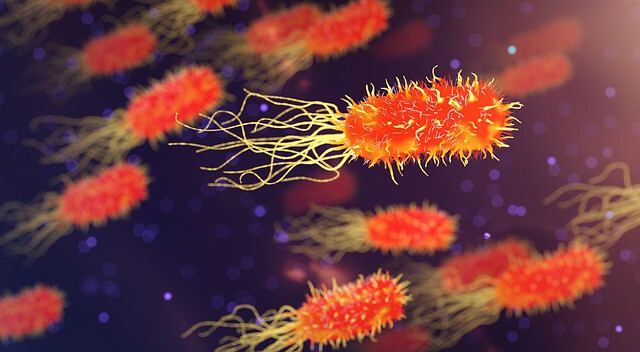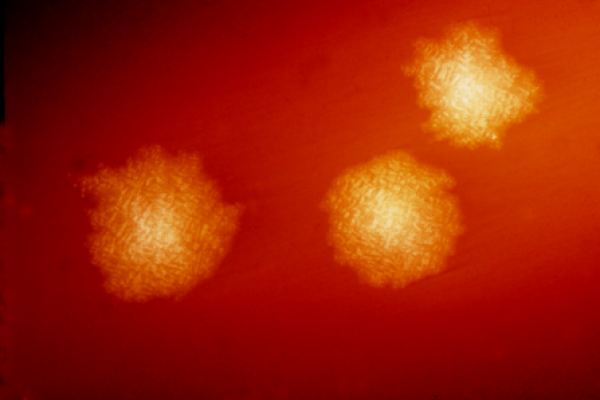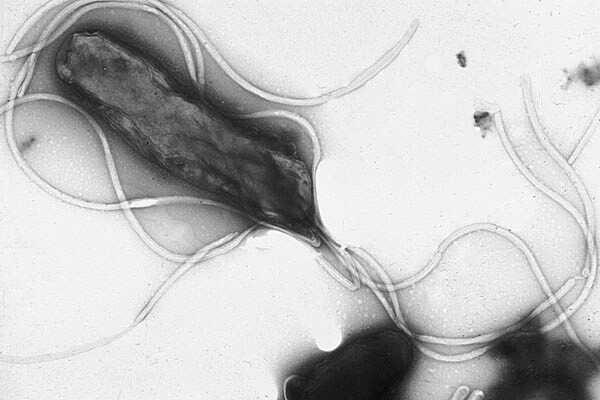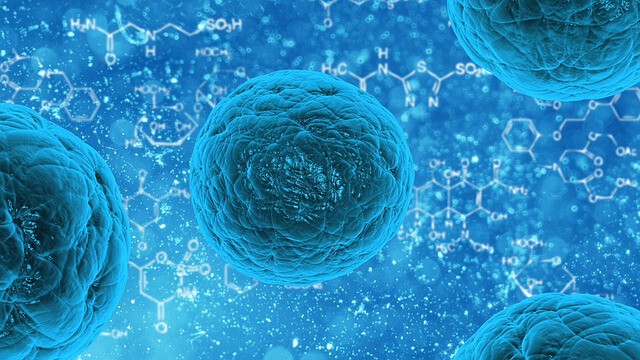There are many bacteria of which we have little knowledge and yet they are in our body, such as H. pylorione that can cause gastric problems, but that most people have asymptomatically. Simply, a mutualistic symbiosis has been established between them and us, with the difference that if the pact goes awry, they can harm or even kill us.
The average life of a bacterium is about 20 minutes. During this short-lived existence, however, a bacterium is capable of many things. Welcome to the world of opportunistic bacteria that are out there without giving a problem until they see the opportunity and mess it up for you.
We are them more than us
First of all, we must assume that bacteria are part of us. In such an inextricable way that it is difficult to decide if we are more them than us. Because we have 25,000 genes contained in our cells, but we have 20 times more than non human genes coming from bacteria. Not in vain, in our body there are as many human cells as bacterial cells. According to Ed Young, author of the book I contain multitudes:
Human beings have 1 cell of bacteria for each of ours, but since they are significantly smaller, they weigh less. In total, the 39 billion calculated in the latest estimates, is equivalent to 1 or 2 kilos at most.
Furthermore, bacteria are ubiquitous. They represent one of the oldest, most resistant and widespread forms of life on our planet, although they are only five micrometers long (five millionths of a meter). To give you an idea of its presence: in a simple grain of dust we could find ten thousand bacteria.

For that reason, they are not easy to eradicate. They are an unmistakable part of our body. In fact, if we eliminated them, we could not survive, because there are bacteria that are harmful to health, but many others are beneficial. For this reason, even after a shower or bath we cannot eliminate the bacteria and other microbes that nest in our body: in fact, it can actually increase, because the water itself also carries bacteria, as Bill Bryson explains in your book The human body. And antibacterial soaps? The problem with these soaps is that they kill the good bacteria on the skin, as well as the bad ones. And the same goes for hand sanitizers.
Fortunately, much of these bacteria are beneficial. Of the approximately one million microbes identified to date, only 1,415 are known to cause disease in humans, accounting for only a third of all deaths worldwide.
opportunistic infections
Some of the infections that bacteria can cause us are not so much because of them as because of a problem in our immune system. In other words, they are bacteria that coexist peacefully with us as long as we have a healthy immune system, but that, in the event that something changes that situation, they can attack us mercilessly. This is what is called “opportunistic infections”. Somehow, the bacteria seizes the opportunity, as if we had left the door of our fortress open.
Here are some of those opportunistic bacteria that seem peaceful until we make it too easy for them:
- Clostridioides difficile. It colonizes the intestine of a small proportion of healthy people (less than 5%). The disease caused by C. difficile It usually occurs after using antibiotics. It is transmitted from person to person by the fecal-oral route.

C. difficile growing on a blood agar plate.
Some people are carriers of the bacteria C. difficile in the intestines, but they never get sick. These are carriers of the bacteria and can spread infections. Advanced age is a risk factor. In one study, the risk of becoming infected with C. difficile it was 10 times higher for people 65 and older compared to younger people. To prevent this kind of infection, therefore, it is usual to recommend hand washing and avoid the use of antibiotics when not strictly necessary.
-
Legionella pneumophila It is a bacterium that causes legionellosis or legionnaire’s disease. It is an aquatic bacterium that thrives at temperatures between 25°C and 45°C. Some infected may have mild symptoms or show no symptoms at all. About 5% to 30% of people who get legionellosis die, especially if antibiotic treatments have been delayed. It is estimated that 8,000 to 18,000 people get legionellosis in the United States each year.
-
Pseudomonas aeruginosa It is a kind of aerobic bacteria, opportunistic in humans and also in plants. P. aeruginosa it is often preliminarily identified by its pearly appearance and grape-like odor in vitro, and is usually contracted in hospital settings. These bacteria infect the blood, skin, bones, ears, eyes, urinary system, heart valves, and lungs, as well as wounds (such as burns, injuries, or surgical wounds).
The use of medical devices, such as catheters inserted into the bladder or into a vein, breathing tubes, and mechanical ventilators, increases the risk of infections. Sometimes the origin of the bacteria is unknown, as can occur in people with very few white blood cells (leukocytes) in their blood after the use of chemotherapy for cancer treatment.
- Staphylococcus aureus it is an anaerobic bacterium that is estimated to be found in one in three people, although that does not necessarily mean that they are infected by it. It is generally harmless, but it is opportunistic, and when the immune system is weakened it can sneak in and wreak havoc.
Currently, this microorganism is the main cause of nosocomial infections, that is, those contracted by patients admitted to a health care facility. This situation is favored by the fact that this species inhabits both the mucous membranes and the skin of human beings, which allows it to enter the patient’s bloodstream through surgical wounds through direct contact or indirect with health personnel, with a contaminated object or even with another patient.

S. aureus bacteria escaping destruction by human leukocytes.
-
Escherichia coli It is a bacterium that is a member of the Enterobacteriaceae family and is part of the microbiota of the gastrointestinal tract. Their way of reproducing and mutating is particularly amazing. Not surprisingly, it can reproduce 72 times in a single day, which means that in three days it can accumulate as many new generations as we have achieved in all of human history. Theodor Escherich, the discoverer of Escherichia coli, once said: “It would seem a pointless and dubious exercise to examine and explain the apparently random presence of bacteria in normal faeces and in the intestinal tract, a situation that seems to be due to a thousand coincidences.”
-
Helicobacter pylori: At the beginning of the 20th century, Helicobacter pylori it was the dominant microbe in the stomach of almost everyone. At the beginning of the 21st century, less than 6% of children in the United States, Sweden, and Germany carried the organism. There are several factors at play for this decline, but antibiotics could be the main culprit.
Its eradication can affect the regulation of two hormones produced in the stomach and involved in energy balance, ghrelin and leptin. And how H. pylori has disappeared from people’s stomachs, there has been an increase in gastroesophageal reflux and its associated problems, such as Barrett’s esophagus and esophageal cancer. People without the bacteria are also more likely to develop childhood asthma, hay fever, or skin allergies. However, having it is a risk, too, if our immune system is weak: it causes hemorrhagic diarrhea and can sometimes cause kidney failure and even death.

Helicobacter pylori seen under an electron microscope, showing numerous flagella on the cell surface.
In addition to all the bacteria listed, about 4 women out of 10 are given antibiotics during childbirth, which means doctors declare war on babies’ microbes just as babies are starting to get them. We have no idea what the long-term health consequences of this may be, but they’re unlikely to be good.
In fact, there are currently concerns that certain beneficial bacteria are in danger of extinction. Bifidobacterium infantisan important microbe in breast milk, is present in up to 90% of infants in developing countries, but only 30% in the developed world, as Ed Young explains.
Research is also being done to find out if people behave differently after receiving certain doses of antibiotics or probiotics. In one of the most promising studies, Kirsten Tillisch found that women who ate a serving of microbe-rich yogurt twice a day showed less activity in parts of the brain involved in processing emotions compared to women who ate yogurt products. microbial-free dairy.
The meaning of these differences is still a matter of debate, but at least they show that bacteria can impact human brain activity. The real test would be the one that shows us that bacteria can help people cope with stress, anxiety, depression and other mental health problems. There are already some signs of success. Stephen Collins has completed a small clinical trial in which a probiotic bacterium reduces symptoms of depression in people with irritable bowel syndrome.
There is strong evidence that microbes in the female reproductive tract affect reproductive health and help protect against disease. Finally, 80% of the air we breathe is nitrogen. For nitrogen to be useful to us, it must take other forms such as ammonia, and it is the bacteria that do that work for us. Without their help, the human species might not even exist.
So what do we do with them?

We are home to billions and billions of microscopic beings that are surprisingly beneficial to us, but also make us sick. They provide us with about 10% of our calories by breaking down foods that we could not otherwise benefit from, but can also kill us.
We both love and hate bacteria. So what can we do with them? Let them roam freely? kill them? A compromise solution would be to slow down dangerous bacteria, which may be more effective than killing them.
According to researchers who propose this solution: “We don’t need to kill bacteria to treat diseases and infections; we can simply reduce their speed and make them less powerful. That way, there’s little chance of any resistance developing.” Be that as it may, they will continue there, with us, because without them we wouldn’t be us either.
